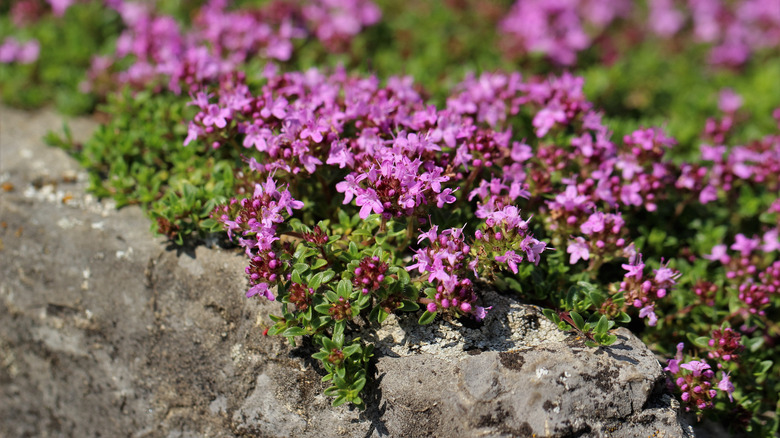Keep Plants Hydrated While Blocking Out Weeds With A Living Mulch For Your Garden
Maintaining a garden can sometimes feel like a full-time job. Between watering and pulling up pesky weeds, your gardening to-do list probably feels endless. Of course, working in the yard is pretty fun, but it is nice to have a day off from time to time. Thankfully, living mulch is here to save your time and energy. A mulch is a material that is placed over the soil's surface to protect it. You may have experimented with mulches made of wood chips, straw, or grass clippings to smother weeds and regulate the moisture in your soil. But if you are looking for a mulch that also looks good, there are certain plants you should consider using as a living mulch.
Living mulch, an eco-friendly mulch option, refers to a mulch made of plants that grow alongside your main landscaping. They aren't the focal attractions in your garden, but they can do a lot of work to help your shrubs and flowers thrive. Living mulches tend to choke out unwanted weeds as they compete with them for nutrients and space, meaning that you don't need to be constantly pulling up seedlings every five minutes. Plus, they help to keep your main plants hydrated by creating a barrier on the soil. This barrier reduces evaporation to keep your soil moist and your plants happy.
Choosing a living mulch
There are quite a few different plants to consider growing as living mulch, but it is important that you pick something fairly low-growing. You may also wish to think about where you will be planting your living mulch and how much sunlight it will get. If it will be growing under larger shrubs, you need to pick something that does well in partial shade. Consider aesthetics when choosing your living mulch, too. Do you want to pick something that flowers in similar shades to the blooms you already have in your garden? Or, are you looking for a dense living mulch that will provide you with a carpet of green?
A popular choice for living mulch is white clover (Trifolium repens). Its perennial mats can spread up to 2 feet wide, providing your bed with a thick covering of rich green foliage and white flowers. Plus, as a nitrogen-fixing plant, white clover can benefit the health of your soil. Another living mulch option to add more color is creeping thyme (Thymus serpyllum). Blooming in the summer and spreading up to 1 foot, each creeping thyme plant creates a gorgeous cover of purple flowers. For a drought-resistant option for living mulch, opt for plantain pussytoes (Antennaria plantaginifolia). With its compact leaves and spread of 2 feet, plantain pussytoes efficiently covers the soil. It also produces a small cluster of white flowers in the spring, which reaches up above the foliage.

